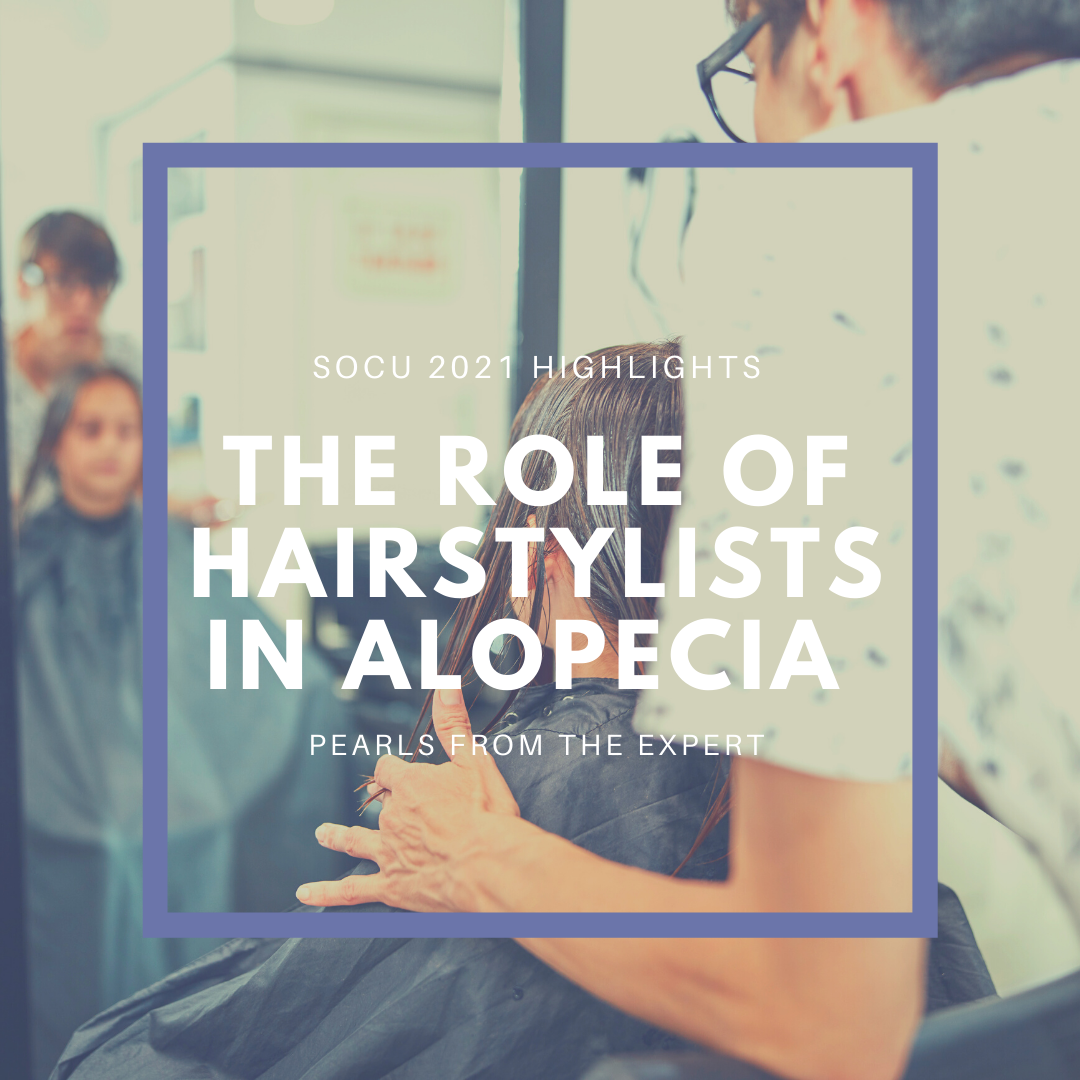Partnering with Hair stylists is more than just a hair style. During the 2021 Virtual Skin of Color Update, and through concrete examples, Dr. Chesahna Kindred shared some of the intangible benefits of working together to increase patient satisfaction. Hairstylists are key in preventing and helping to treat traction alopecia!
Hairstylists can help to:
-
- Recommend healthy hair styles
- Train the patient regarding implementing healthy hair styles
- Reinforce your advice
Dr. Kindred shared a case of a patient with Honeycomb alopecia, which can clue you in on the fact that the patient has had locs. The stylists, or loctician, noticed that the patient’s parts were widening and thus was careful to not apply too much tension (which can often occur with the act of finishing the ends of a loc in a palm roll). In this particular patient, the loctician had already noticed evidence of alopecia and removed the locs prior to the patient going to see Dr. Kindred. Because the loctician was careful to avoid excess tension and help to maximize the visibility of the scalp for Dr. Kindred’s examination, Dr. Kindred was able to perform a biopsy and provide best care for the patient. The biopsy resulted as traction alopecia and central centrifugal cicatricial alopecia (CCCA), and now the patient is solely being managed for CCCA as the traction has resolved due to the care taken by the loctician.
CCCA
We as dermatologists have been training hairstylists in how to recognize alopecia. With the “Check your center part” campaign, the hairstylists in Dr. Kindred’s office are working to increase awareness in the stylist community by teaching others to look for areas with decreased hair density or loss of follicular ostia.
-
- “Sweet or soft spot” – stylists know to be gentle around this area in CCCA, and have developed hair styles to camouflage thinning
- CCCA Forme Fruste – abnormally short zone of hairs. When we partner with stylists, we can let them know this is an early sign and counsel to refer to dermatology
- Regimen adherence – CCCA is chronic, and we do not have a cure. We do not have the same impact that stylists have. Stylists can help convince patients to stick with their regimen and to be patient to see results
Dispelling myths
Between apple cider vinegar, black seed oil, biotin, and rice water, there are so many myths online! Myths will continue to proliferate, and alopecia patients are a vulnerable population. it is important to partner with stylists so they can be teammates in spreading facts over myths.
Synergistic relationship
Stay clear of stylists who diagnose, treat, or “prescribe”. Dr. Kindred will recommend ingredients while the hair stylist will recommend actual products. Dr. Kindred avoids recommending specific hair styles, as that is in the hair stylist’s lane!
Summary
-
- Stylists are key in prevention (promoting and teaching healthy hairstyles).
- Stylists can triage and recognize alopecia early, so we can do more for the patient.
- As many of these diagnoses are chronic, the stylist can more effectively make sure the patient sticks to their regimen. When you give the patient a counseling form, counsel them to share it with their stylists.
- Stylists can be our partners in education.
- Look for seasoned stylists that are passionate about hair loss while understanding that we each play a special role and should stay within the scope of our training.
This information was presented by Dr. Chesahna Kindred at the 2021 Skin of Color Update virtual conference held on September 10-12-2021. The above highlights from her lecture were written and compiled by Dr. Jackie McKesey.
Did you enjoy this article? Find more on Skin of Color Dermatology here.

